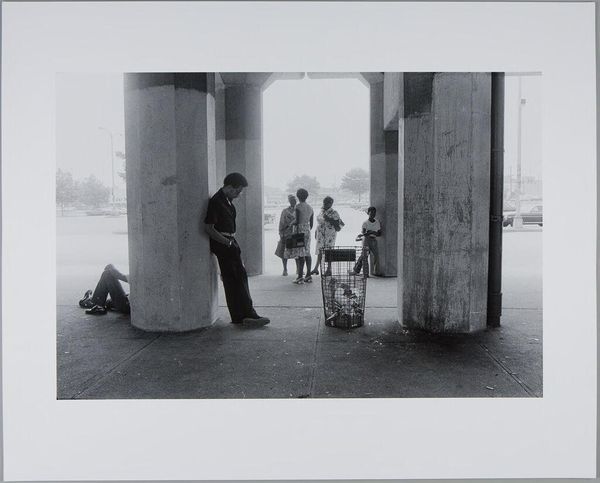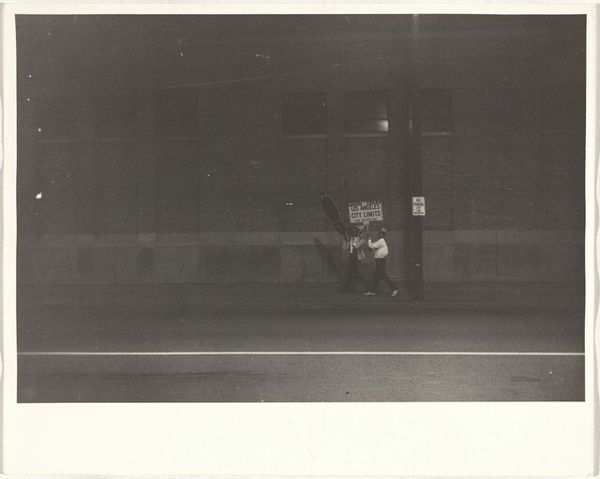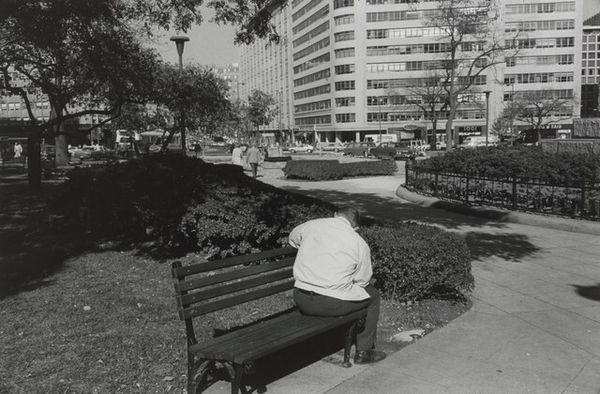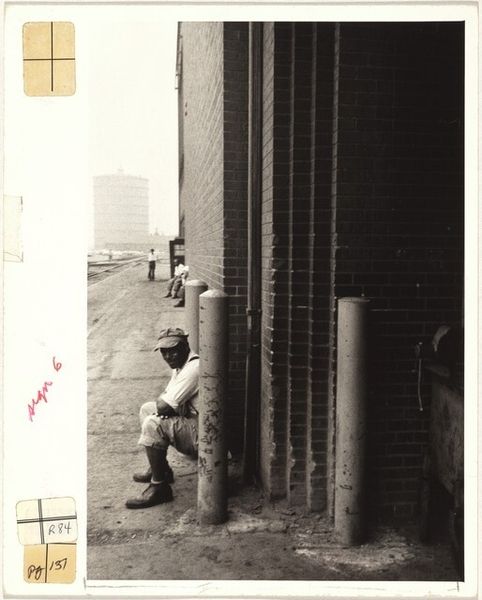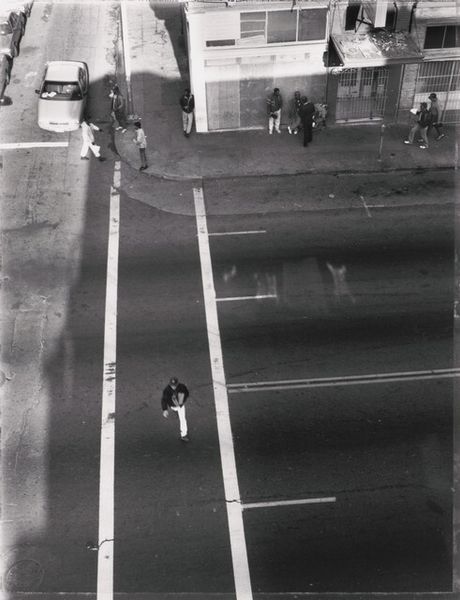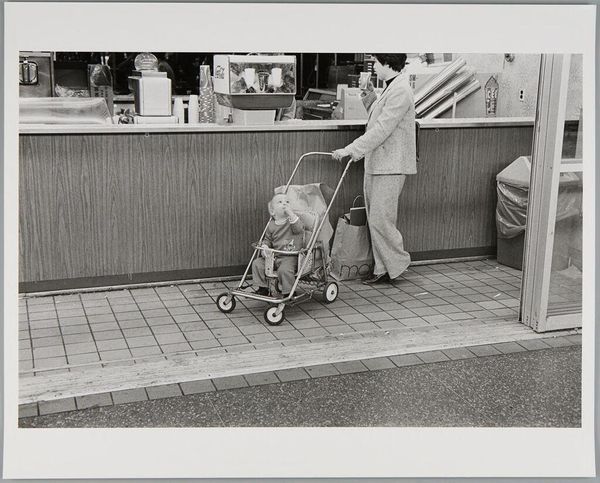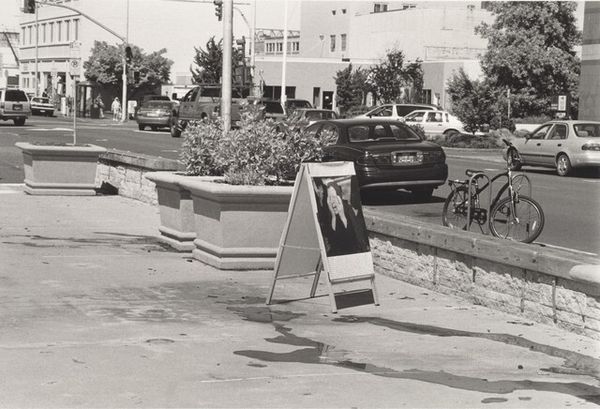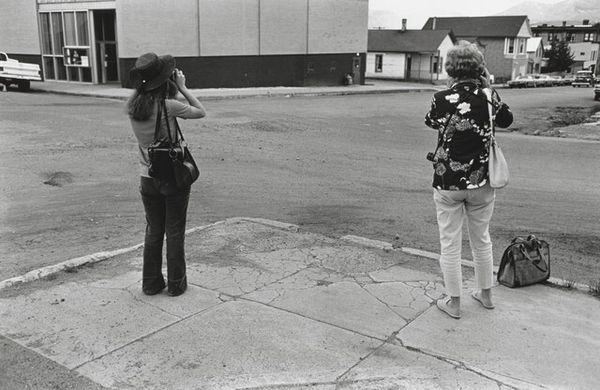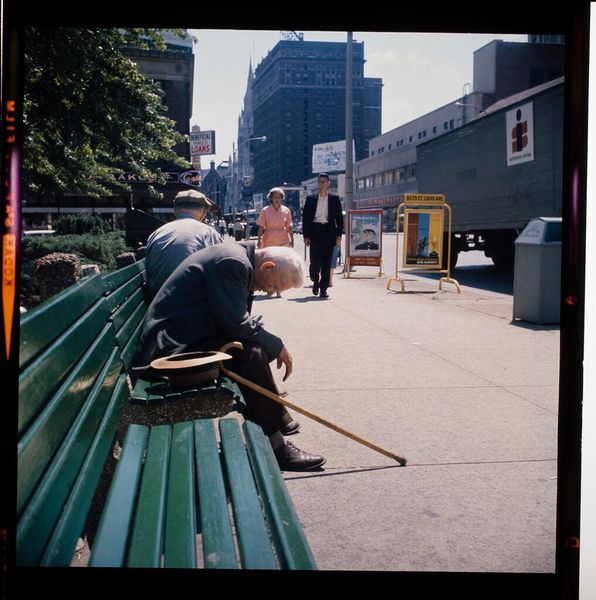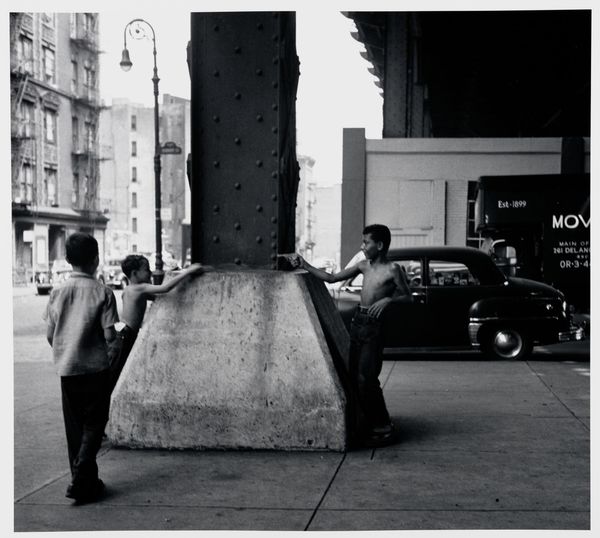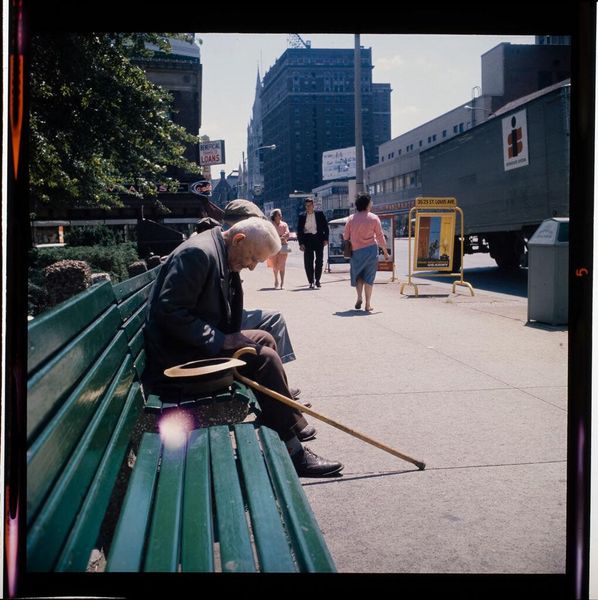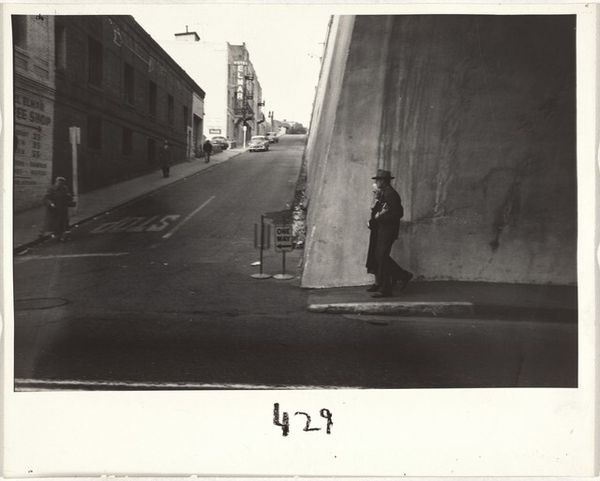
photography
#
portrait
#
black and white photography
#
cool tone monochrome
#
street shot
#
landscape
#
outdoor photograph
#
outdoor photo
#
black and white format
#
street-photography
#
photography
#
black and white theme
#
black and white
#
monochrome photography
#
monochrome
#
monochrome
Dimensions: image: 26 × 22.6 cm (10 1/4 × 8 7/8 in.) mount: 39.4 × 35.6 cm (15 1/2 × 14 in.)
Copyright: National Gallery of Art: CC0 1.0
Curator: This is Robert Adams’ “Denver,” a black and white photograph from 1980. Editor: There’s a quietness to this image, almost melancholic. The woman seems isolated, dwarfed by the urban environment. What's your read on this piece? Curator: It's easy to focus on the woman, but I see this as a commentary on the changing American West, specifically, the impact of unchecked urban sprawl in Denver. What happens to communities, to individuals, when profit drives development, not people's needs? Look at the relentless grid of the parking garage in the background. Editor: So, the woman isn't the main subject? She is just a sign of the problem? Curator: In a way, yes. She is a figure *within* that landscape, not separate from it. Consider the implications of how her gaze meets those flat horizons, the "Western Federal Savings" building, and even the old newspaper dispenser. What dialogues are formed across the photographic field of urban and social decay, economic stratification and desolation? How can we understand this work through the framework of environmental justice, seeing the subject and location both suffering? Editor: I hadn't considered the photograph through an economic lens, how it connects to land usage and accessibility. Curator: Exactly! Adams is often described as a New Topographics photographer, but it's so important to remember he was intentionally inserting a critical point of view to challenge our ideas about how progress impacts people's lives. Is "progress" good if it uproots the foundation that sustains communal belonging? Editor: I'm rethinking my whole interpretation. I initially focused on the isolation of the individual, but seeing it as commentary on broader urban issues makes the photograph much more powerful. Curator: It reveals how seemingly personal experiences are deeply intertwined with systemic issues. I walk away from Adams’ images and ask myself: what foundations will last if the community frays apart? Editor: That's a really insightful question to end on. Thanks for shedding light on these undercurrents.
Comments
No comments
Be the first to comment and join the conversation on the ultimate creative platform.
